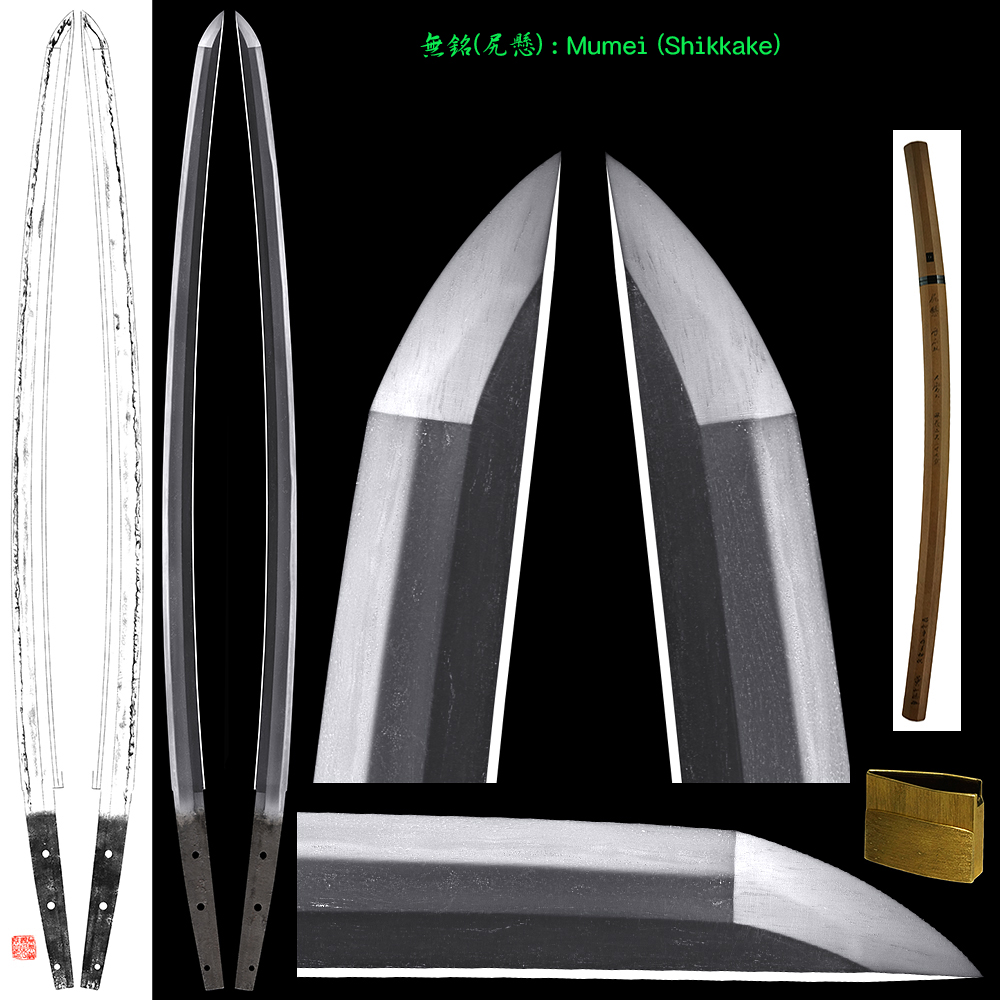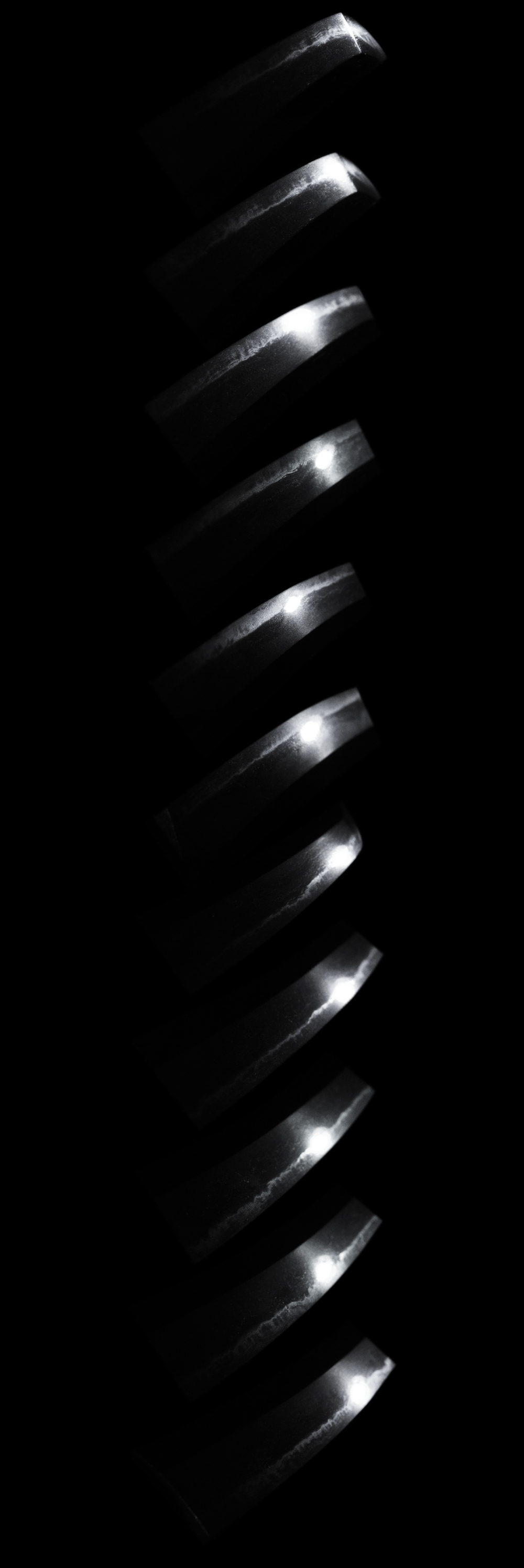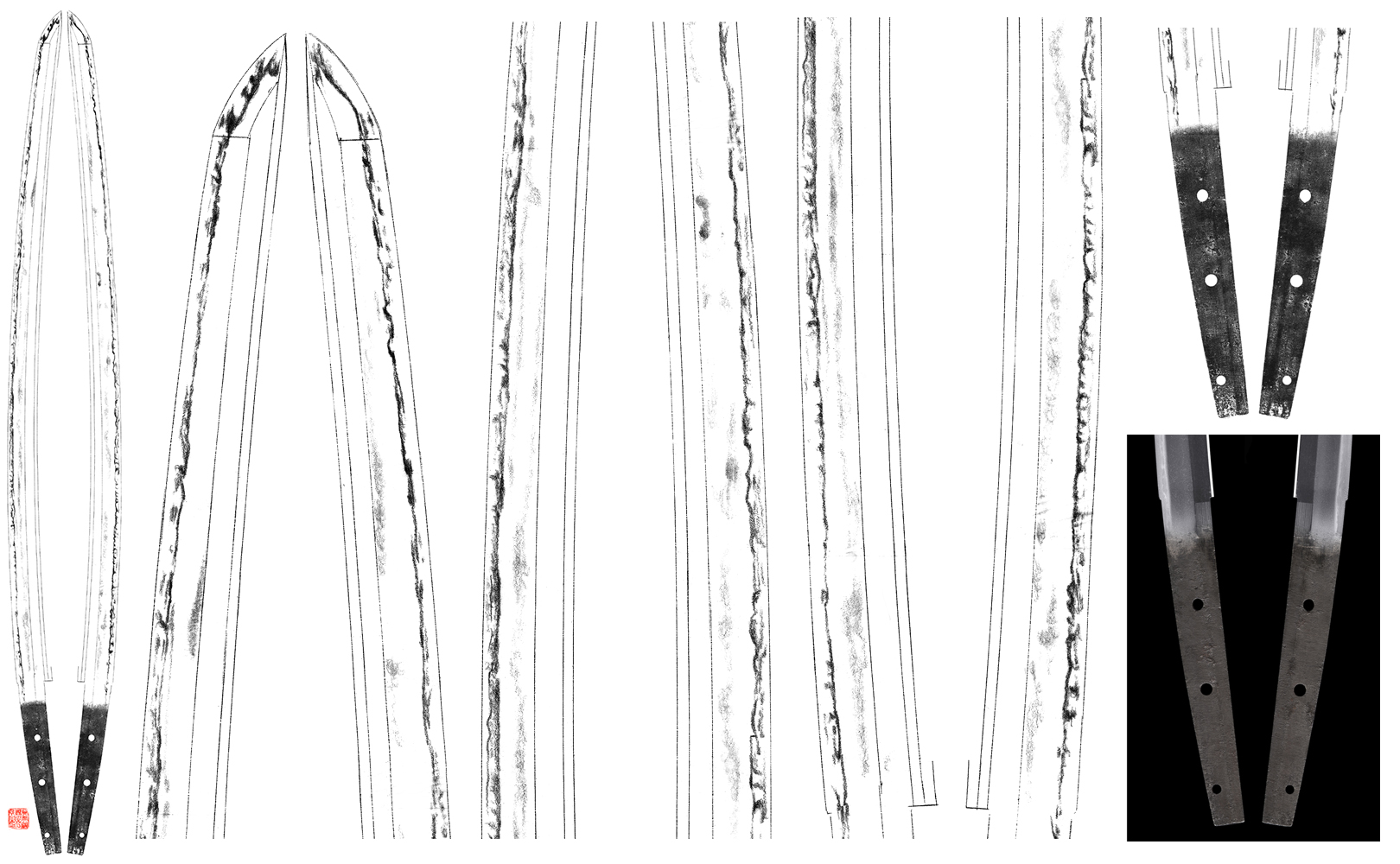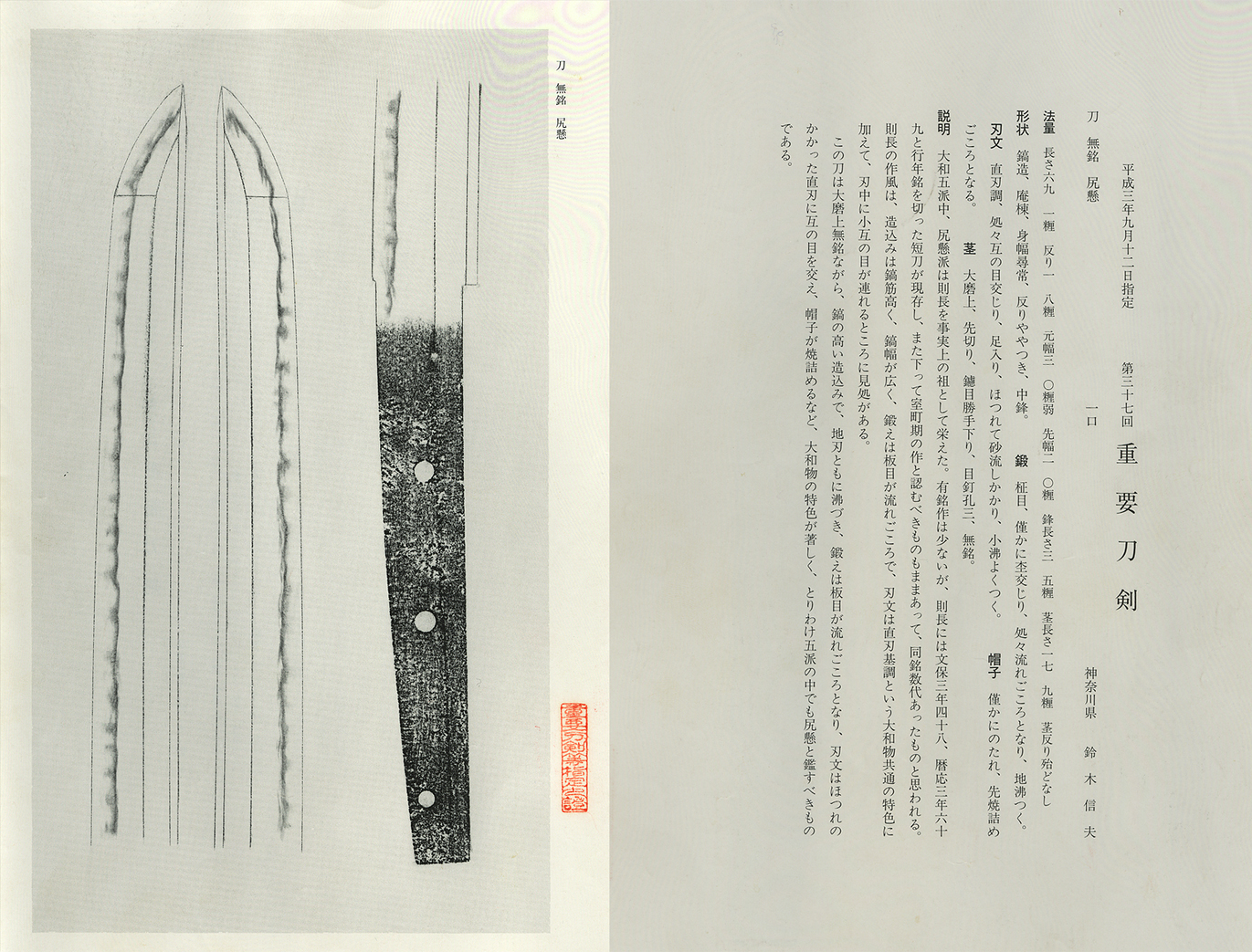Katana: Mumei (Shikkake school)(37th NBTHK Juyo Paper)
2017/01/05
Katana in Shirasaya (37th NBTHK Juyo Paper)
Signature : Mumei (Shikkake school)
Sayagaki was done buby Honma sensei:Shikkake Rekio era osuriage
cut shortened) the length of the blade is 2syaku 2 sun 7 bu
Showa Kanoe Tori Nen Syosyu Kunzan shi.
Explanation: The blade was made by Shikkake school
at Rekio era(1938-1340) 1981(syowa 56)
early Autmn Kunzan wrote in his sword diary.
(We divide 4 sections for each sword as Saijyo saku, Jyojyo saku
Jyo saku and regular saku)
This sword Mumei attributed as Shikkake belongs
to Jyojyo saku ranking.
The blade was polished by high ranking polisher.
Habaki:gold foiled double habaki.
Blade length : 69.0 cm or 27.16 inches.
Sori : 1.9 cm or 0.74 inches.
Mekugi : 3
Width at the hamachi :3.03 cm or 1.19 inches.
Width at the Kissaki : 2.08 cm or 0.81 inches.
Kasane : 0.68 cm or 0.26 inches.
Era :Kamakura period Rekio era(1338-1341) 677 years ago.
Shape : The blade is oosuriage mumei(cut shortened) wide
and thick with long kissaki nice looking shape.
Jitetsu :Itame fada and mokume had mixed
and massage had convined with jinie attach beautiful texture.
Fortunately the blade doesn't have Bo-hi so we can see the texture of
the Shinogo ji which consist of Itame hada
and mokume had mixed texture.
Hamon : Niedeki suguha based gunome midair hamon
with thick nioikuchi and in Ha, there are many sunagashi
and small kinsuji work Hoture hamon and Yo which is very active hamon. Boshi is Yakizume style typical Shikkake hamon.
Special feature : The NBTHK judged this sword as a swordmsith of hikkake School.
Shikkake school is Yamato province prospered present Tenri City in Nara pref.
The name Shikkake was from Shikkake-ishi, the stone pedestal settling down
the portable shrine to take a rest on the way of religious services.
The jitetsu of this sword is extremely fine and elegant deep nioikuchi rather close to Taima School than Shikkake.
The name Shikkake was from Shikkake-ishi, the stone pedestal settling down the portable shrine
to take a rest on the way of religious services. It is thought that the founder and the representative swordsmith
was Norinaga. His tanto dated 1319, aged 48 still survives. It is said
that the same swordsmith name had been used for generations.
Distinctive features of Shikakke school are; fine iron texture, risen shinogi and wide shinogi area,
suguha includes ranged ko-gunome. Five principal swordsmith schools prospered in Yamato province:
Tegai, Shikkake, Taima, Senjuin and Hosho. Norinaga is thought as the substantial founder of Shikakke school.
Dated tanto in 1319, the third year of Bunpo era in late Kamakura period still survive at the age of 69.
Counting backward, Norinaga was born in 1270, the seventh year of Bunei era in Kamakura period.
Later generations Norinaga forged sword to the Muromachi period.
Distinctly rose shinogi-suji, wide shinogi-haba, streamlike pattern of itame-hada and suguha-hamon are characteristics
common to all Yamato province. The workmanship of Shikkake School shows traditional Yamato style.
Ranged and conspicious ko-gunome is an individuality of Shikkake.
Generally most of Yamato school blades are slender but this sword is wide and thick enough healthy blade.
We strongly recommend to buy this fantastic Yamato school sword.
The most Yamato school sword is Suguha hamon.
If you watch the blade carefully, you never get weary of looking at this sword.
The blade is not active but you will understand well the charm point of Yamato school after years has passed.
After you obtain this sword, please keep watching hamon and Jigane and look at our Oshigata carefully.
Sooner or later, you will understand the charm point of old Yamato school sword.
The price is quite reasonable.
37th NBTHK Juyo Paper
Aoi Art estimation paper : whole Oshigata.






